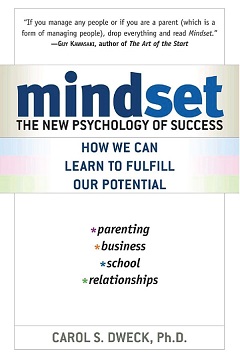December 22, 2019 Opinion No comments
Embrace the challenge to avoid procrastination

This post is highly opinionated, personal, and demotivating. Don’t read.
You may be procrastinating at the moment by reading this blog post the same way you do when you scroll Twitter/Instagram/Facebook/Reddit. If you have something more important to do now, do it now! Really, do it!
I don’t mind if you are not going to finish reading – this post is far from perfect. Also it might be the reason why it exists in the first place, since as they say “Perfectionism is a prime cause for procrastination, because demanding perfection usually results in failure.” Last call for action – go and do the thing you are postponing to do even if it won’t be perfect!
That crunch time
A lot of us tend to do everything at the very last moment. Sometimes working in the last moment is intense and very productive. Remember that night before the exam in school? What about crunch time at work not so long ago? If you succeed, last moment triumph has a certain joyful taste to it. If you fail, you feel miserable and crashed.
I remember a time at one of my previous jobs when I sat till 6AM fixing critical bug related to monetary operations, writing tech post and then coming to the office around 12PM like a hero (well at least in my own ego eyes). Moments like that made me happy, but those were my 20s. Now I really want to have my 8 hours of sleep and a sustainable pace of work.
Time management techniques don’t work. Do they?
There are time management techniques that try to address these issues so that you can plan and complete your goals throughout the time. For instance, there is one where you split your tasks into 4 groups like on the picture below.
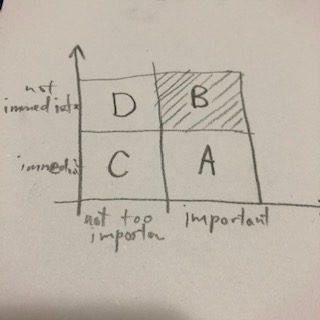
The idea is to make yourself work on important but not very immediate tasks (B) so you don’t end up with important and urgent ones later on (A). And in no way you want to be working on (C) or (D). The idea is good, but it doesn’t work for me at all, and likely it doesn’t work for some of you.
One other idea is called “pomodoro” requiring you to split your work into 25 minutes of highly intense and focused work. This one mostly works for me but I have rally hard time sticking to it for a long time.
There are tons of other methods to make you work on things you would rather do later, like “East That Frog!“, but my argument is that these techniques suck a big deal just because they assume people are rational.
We are irrational, emotional, impulsive, lazy (ok, maybe not you) and we do not operate like machines. If something is not intrinsically motivating there is very little you can do about it. How about doing it tomorrow? (you know that mysterious place where 99% of human productivity is preserved)
Not suggesting anything
I cannot suggest doing anything as I am not an authority on anything. I know next to nothing about time management. I know next to nothing on motivating people. At the same time we all know what we need to do, but we just aren’t doing it. For instance, there are numerous books, techniques, “gurus”, programs, whatever for loosing weight, but everyone, and I mean everyone, knows that it all boils down to “Eat less, exercise more!” that’s it. Yes, that’s it, and yet despite majority fails. It only works if you fall in love, or, say, you are an actor to take that 10M gig or something else of high intensity. Sad, but true. You must be demotivated by now. Sorry.
Utilize what works
There are some things that work for me even when it is about doing something I don’t want to. Shame to acknowledge, but these are based on opinions of others about me (yes, that thing that we say isn’t important, but at the same time is often the most important to most of us, social creatures). Maybe some something else might be the kicker for you. Below are some things that work for me:
External visibility of progress
I find it helpful to state my commitments publicly. This generates pressure to complete whatever promised as not to look bad in eyes of others.
Self-imposed deadlines
In the past I would sign up for things that I knew I had to do but would always postpone, like that nasty certification exam or language exam or whatever. It works because there is an approaching deadline. On this note:
A rational decision maker with time-consistent preferences would not impose constraints on his or her choices. But if people impulsively procrastinate, and if they also are aware of their procrastination problems […], self-imposing costly deadlines can be strategic and reasonable.
Ariely, Dan; Wertenbroch, Klaus (2002) “Procrastination, Deadlines, and Performance: Self-Control by Pre-commitment” (PDF). Psychological Science.
Challenges
I love being better than my previous self. This works best when it is something measurable, like personal record of some sort. This also works great if others would find it admiring. I know this worked for me really well as for instance I would complete my 200km running challenge in Sep 2016 despite being injured. These days I’m trying to play this game as well. I’m currently in four challenges where I promised to stick to my commitments to four different people. I also have few self-imposed challenges (not sure if these would work).
Hey, you, my reader!
If you have something you want to do, but you’ve been putting off lately, I am challenging you: play a challenge game with someone by promising them to complete the thing you want to do or otherwise you will complete a punishment (let them come up with it), ask the other person to do the same so both of you gain something from the interaction. Make sure it is something you can measure and share, also time bound it (week, two, month).
If we know each other, I would love to play this challenge game with you as well. Get in touch!
Having Fun Solving Leet Code Problems
December 12, 2019 Interview No comments
Disclaimer: anything you read in this blog post is my own opinion and doesn’t represent opinion of my current or past employers in any way.

For those of you who are looking for landing a Software Development Engineer job at a large tech company being able to crack the coding interview is essential.
You might be a reader from outside North America and are not really used to the kind of software interviews common here, but the harsh truth is that you have to grind college/university kind of coding problems before the interview.
Of course, the argument always goes that you should be a problem solver and that interviewer is accessing your approach to tackling a problem as well as your comprehension and communication skills. My counter argument is that preparation matters a big deal and even people with enormous experience and track record of deliveries would have difficulties if they haven’t brushed on algorithms in a long while.
Let’s do a thought experiment: let’s imagine there are two deep copies of you. By “deep copy” I mean that you both have absolutely identical personalities, knowledge, background, experience. Now you are both to be interviewed in one month at a big company. Copy One doesn’t have time to prepare and just looks up what are the main types of questions. Copy Two takes a month of vacation and sits at TopCoder / LeetCode / HackerRank / GeeksForGeeks solving, say 300-500 problems. Copy One is also capable of doing it as both of you did well in university XX years ago. Now when the interview comes, copy Two just shines and cracks all questions. Copy One struggles with solving problems but manages them somehow. Both do almost equally well on behavioral and design questions, though copy Two still has an edge as all of her/his stories are pre-prepared. So when the performance of these two copies is compared copy Two wins even it appeared both had similar cognitive and communication skills. What hiring company gets is almost identically same employee with a difference of 1 month of intensive practice, which has 0 effect on day-to-day job or quality of work.
Nevertheless there are some positive sides to these kind of interviews. One of them is that they are somewhat standardized and candidates are generally judged against the same bar. Another very obvious aspect is that these problems require writing code. If you go to an interview for a software engineer role and the main skill of your job isn’t accessed then there is something wrong with that interview. Here is the quote for this:
Talk is cheap. Show me the code.
Torvalds, Linus (2000-08-25)
My favorite types of questions for interviews are those (a) that could be solved in multiple different ways from least efficient to most efficient; even better are those (b) that start very simple but allow interviewer to make the problem ever more difficult, say by increasing the limits or converting input to a stream instead of an array, or by adding complication that requires alternative approach. Though an ideal problem, in my opinion, would be a problem that satisfies both conditions (a) and (b) and also is close to potential real-world task (c).
Problems at interview preparation websites, such as LeetCode, might satisfy the condition (a) from above, but rarely satisfy (b) or (c). I almost never see problems that would be (a), (b), and (c) – those would be fantastic.
Some example of a set of problems that satisfy (a) and (b) at LeetCode is classical easy problem “Best Time to Buy and Sell Stock” that can be solved with brute force O(N²) or more efficient O(N), but then there is a twist by adding transaction fee, when you would need to come up with a dynamic programming solution, there are many other twists. Here are variations: 1, 2, 3, 4, 5, 6. Some example of a problem that matches condition (c) would be implementation of an iterator interface, like “Flatten Nested List Iterator“.
Personally I’m not good at solving coding problems. I did participate in ACM competitions back in the university days, but I was always 3rd person on a team – kind of banging my head against the wall on a single problem while the other two guys were bashing the keyboard or coming up with magical math formulas.
I keep practicing on LeetCode mostly to keep myself in a good form. At the moment I have 407 out of 1285 problems solved. I bought myself premium subscription as it unlocks some problems and makes submission process faster. It also unlocks some of the mock interview functionality. Again I suck, but this kind of stats please my eyes (previously solved problems appear in mocks at times so I just know how to solve them).

Another fun activity you can do at LeetCode (without premium subscription) is to take part in Weekly Contests. Please let me know if you are competing as well and want to chat (my contacts are always easy to find andriybuday everywhere or leave a comment).
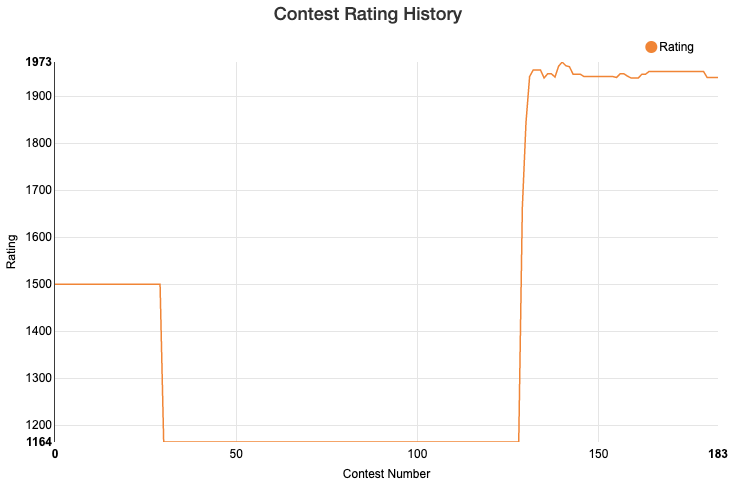
Recommendations?
This post wasn’t much about how to prepare to the interview nor an overview of coding practicing resources, though if you are interested, read about the interview process online, consider buying yourself the book “Cracking the Coding Interview” or other top resources. Remember that big companies often have the information on their process public, for example facebook on their interview process. Make sure you prepare for system design interview as well. But most importantly of all: practice, practice, practice!
Book Review: “Designing Data-Intensive Applications”
November 24, 2019 Book Reviews, Design No comments

The book “Designing Data-Intensive Applications” is definitely one of the best technical software engineering books I’ve ever read. Also it is probably the best one you can use to prepare for system design interviews in big tech companies, so take a note. I personally made three small tech talks within my tech team based on this book and plan to maybe do few more. Engineers love this stuff.
The book is very crisp and well structured dive into architecture of under-the-hood workings of distributed data systems, such as databases, caches, queues focusing on fundamentals rather than specific implementations. The book is also based on lots of scientific research which is properly referenced so you can always go deeper into any of given topics if you would like to.
Here is the list of all of the chapters, with some of the notes, and random comments from me (not well structured, but gives a good idea on what the book is about):
- Reliable, Scalable, and Maintainable Applications
- Martin Kleppmann brings in main terminology and fundamentals in this chapter:
- Reliable – system works correctly, even when faults happen.
- Scalable – strategies for keeping performance good under load.
- Maintainable – better life for engineering and operations.
- Martin Kleppmann brings in main terminology and fundamentals in this chapter:
- Data Models and Query Languages
- Data models as in three main types of databases: document, relational, and graph, and sometimes full-text search can be considered as another data model type.
- Storage and Retrieval
- Awesome chapter where the author builds database starting with simplest possible file commands like:
- And then expanding this to log-structured databases (Bitcask, SSTables, LSM-trees, Cassandra, Lucene, etc) and to update-in-place ones, with B-trees being the main example of these and core for effectively all relational databases.
- In this chapter the author also talks about two types of categories of databases – those optimized for transaction processing and those optimized for analysis.
- Encoding and Evolution
- This chapter is looking at different types of encoding, including popular JSON, XML but also those that are language specific or those that are used to write data to disk and also all kinds of problems that come with backwards compatibility and rolling upgrades.
- Replication
- The chapter on replication explains of single-, multi-, and no- leader replication, touching of potential problems you might face with them, such as “split brain“, “seeing into the future” because of the replication lag, etc, and solutions to those problems.
- Simple example of split brain is in single-leader replication when the leader node becomes temporary unavailable and one of the replicas is elected as leader, though when the old leader comes back online it still considers itself to be the leader. These inconsistencies and situations have to be be handled in properly designed distributed systems.
- Partitioning
- Key-range partitioning – partitions based on ranges of sorted keys.
- Hash partitioning – hash function applied to each key and partitions are based on ranges of hashes.
- Local document-partitioned indexes – secondary indexes stored in the same partition. Read requires scatter/gather across all partitions, write is to single partition.
- Global term-partitioned indexes – secondary indexes partitioned as well. Read from single partition, write to many.
- Transactions
- Race conditions:
- Dirty reads – read even before data committed.
- Dirty writes – another client overrides old uncommitted data.
- Read skew – client sees different parts of database at different times. Preventable by snapshot isolation.
- Lost updates – two clients in read-modify-write overriding each others data. Preventable by snapshot isolation or manual lock.
- Write skew – premise of the write decision changed since it was read by a transaction. Preventable by serializable isolation.
- Phantom reads – transaction reads data matching search conditions that are being changed by another client. Preventable by snapshot isolation.
- Serializable transaction types: executions in serial order, two-phase locking, serializable snapshot isolation.
- Race conditions:
- The Trouble with Distributed Systems
- All kinds of crazy things can go wrong when you are dealing with distributed systems are discussed in this chapter, including lost network packets, clocks going out of sync, temp failures of nodes, heck even sharks biting underwater network cables. Here is screenshot from youtube for fun:

- Consistency and Consensus
- Achieving consensus means making all of the nodes agree on irrevocable decision. One of the ways to achieve this without implementing own consensus algorithms is to “outsource” it to tools like ZooKeeper.
- Leaderless and multi-leader systems do not require consensus, but they need to cope with such problems as conflict resolution.
- Batch Processing
- Unix tools such as awk, grep, sort have the same processing principles as MapReduce. Same concepts extrapolate into dataflow engines as well. The author shows how two main problems of partitioning and fault tolerance are solved and then goes into join algorithms for MapReduce: sort-merge joins, broadcast hash joins, partitioned hash joins.
- Batch processing jobs read some input of data and produce some output, without modifying the bounded input.
- Stream Processing
- Stream processing is different to batch processing because the input is not bounded and is never-ending, therefore sorting does not make any sense and data is served by message brokers.
- Two types of message brokers are discussed: AMQP (order not preserved, messages assigned to consumers and deleted upon acknowledgment by consumer) and log-based (order preserved and same consumer receives all messages from same partition, messages retained and can be reread).
- The Future of Data Systems
- One of the interesting approaches to designing applications is to shift amount of work done from the read path to the write path. I.e. you would do more of preprocessing when writing via materialized views and caches so that when you need to read everything is prepared for you and query is super efficient. This technique is probably something that is used often when solving scaling and latency problems.
- I especially liked the last chapter on the Future of Data Systems and section “Doing the Right Thing” entertaining on implications of intensive data usage and trying to automate things based on data. One interesting thought experiment is to replace the word data with surveillance: “In our surveillance-driven organization we collect real-time surveillance streams and store them in our surveillance warehouse. Our surveillance scientists use advanced analytics and surveillance processing in order to derive new insights.” This becomes scary, especially when we try to justify automatically made decisions without looking at ethical implications. Another interesting quote brought in this sections is this “Machine Learning is like money laundering for bias“.
Conclusion
If you are software development engineer working on scalable distributed systems is book is simply must read. Totally and absolutely recommended. I will be going through some of the chapters once or twice again as one read is not enough. Let me end with this fancy quote brought up in the book:
“The major difference between a thing that might go wrong and a thing that cannot possibly go wrong is that when a thing that cannot possibly go wrong goes wrong it usually turns out to be impossible to get at or repair.” – Douglas Adams, Mostly Harmless (1992)
Approach to System Design Interview
October 7, 2019 Design, Interview, Opinion No comments
Designing something like Dropbox or other well known service is one of the standard System Design Interview (SDI) questions at FAANG companies. This post is for self-educational purposes focused on how to approach SDI question. Also this does not represent how any tech company is designing their software or is interviewing candidates. Though, feel free to use it as a guide for your SDI if you find it useful.
I like to break SDI into four phases. You want to get to the last phase when interviewer is making the problem harder by asking you follow up questions.
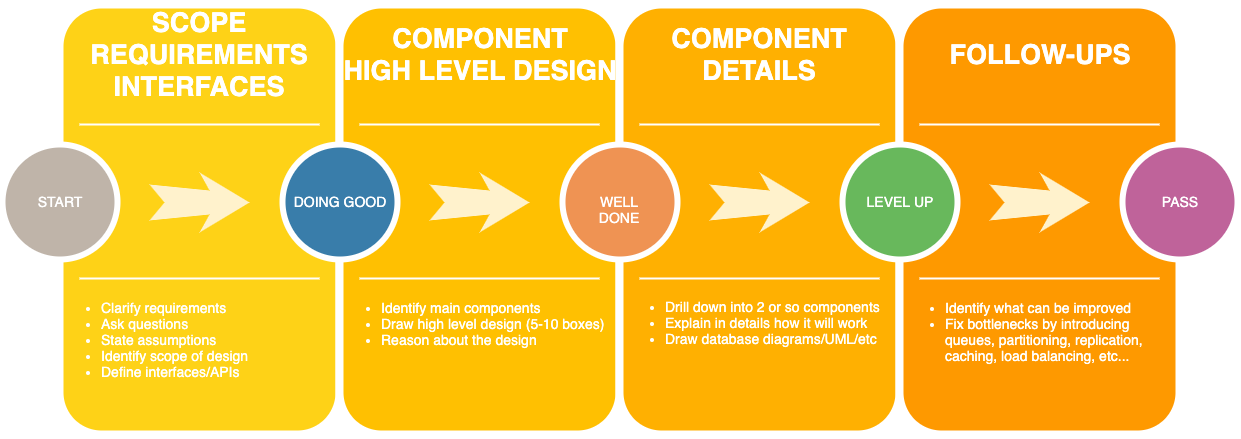
Scope, Requirements, Interfaces
The most important part that sets the tone for the entire interview is to clarify requirements with your interviewer. Try to understand what functional and non-functional scope of the problem they expect you to cover.
Functionally Dropbox “offers cloud storage, file synchronization, personal cloud, and client software”. You can list these as bullet points during the interview (any device accessibility, automatic file synchronization, file sharing, file storing, backups, team collaboration, security, etc).
Something like Dropbox will have to handle millions of users, have scalable, available, and performant backend. Ask for number of users, active users, devices, etc to be able to estimate required storage, network capacity and understand if partitioning and how much of replication of data is required. This can be used in calculations later on. Something like: 2K (avg. files) * 500Kb (avg. file size) * 1B (tot. users) ~= 1PB (file storage).
It is always a good idea to define interfaces of your system. APIs exposed by server are usually a great way to start. Define interfaces like list of REST calls or just names of APIs.
Component High Level Design
After gathering the requirements and documenting main interfaces proceed to listing major components of the system. You might not be able to list everything, so mentioning that there are other aspects that you not fully covering, but can get back to them when required (examples could be: authentication, payment system, integration with external systems, etc).
At this stage you should arrive at key ideas to solving the design. Key ideas for designing Dropbox could be: split large files into multiple chunks; keep chunk metadata in database locally and sync to server; receive and upload files via synchronization queues.
Once key solution ideas are clear, draw some boxes. It is best to start from top and proceed to details. In our Dropbox example it could be Backend and Frontend. Backend could consist of File Storage, Metadata Database, App Servers and Queues. Our Client could be split into logical parts. Many similar posts (not sure about origin) suggest to split client into Chunker (split files into multiple), Watcher (watches local folders and server for updates), Indexer (processes watcher events), InternalDb (stores metadata).
Component Details
Obviously, it is impossible to cover gigantic system, like Dropbox, in 45 minutes, so you have to focus on few aspects that are important. For instance, you can focus on database design for metadata by drawing tables and their relations, or instead you can focus on how updates will be sent to other devices by drawing sequence diagram, etc.
This could be the best stage to show your depth of the knowledge in one or the other area. More often then not interviewer would be happy to focus on area you are comfortable with and then would ask you follow-up questions to understand the depth of your knowledge and whether you really know what you are talking about or just making things up while throwing buzz-words. It should go without saying that you should not be doing this.
Follow-Ups
It is a very good sign when interviewer starts to make the problem harder as it means you are doing really good. At this stage the interview can go into any direction depending on the interviewer, but often you would need to solve scalability problems (queues, caches, load balancers), availability (replications), or you could be asked to increase the scope of functionality that would make you add new components, etc.
Conclusion
This is my concise view on the parts of SDI, though your experience could be totally different depending on the interviewer, company, level targeted and specifics of a question (like, say, designing fridge controller).
I recommend reading the book “Designing Data Intensive Applications” as it is absolutely great resource to train yourself whether you are preparing yourself for interview or just trying to solidify design skills. You can also try watching youtube videos and googling articles like this.
It’s all in your head: thoughts on 15 books
September 22, 2019 Book Reviews, Career, Opinion, Personal 3 comments
Metacognition. Seeing with your tongue. Implanting fabricated memories. Superintelligence. Immortality. Dataism as religion. Lobsters and your social status. Number anchoring when negotiating your salary. Amoral deception. Illusion of choice and of free will.
Are you intrigued? You should be. I definitely was impressed by some of the new knowledge gained and ideas covered in few books read recently. This post is a set of short one-four paragraph book reviews. Some books I do recommend and some I don’t though still mention them for my personal record and for entertainment reasons and also to prevent you from reading them. Since this is covering 15 books the post is going to be relatively long. Please bear with me.
Learn better
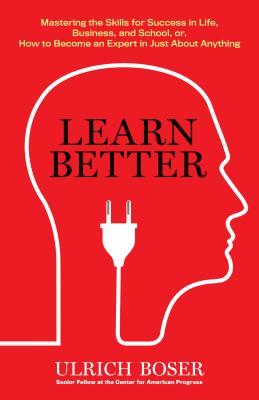
Key idea: Learning is a skill and you can teach yourself to be better in it.
The author advises 6 steps: value – make learning more valuable by associating it to things you appreciate, target – set learning goals, develop – practice with audience or teach, extend – constantly improve understanding of existing knowledge, relate – create relationship between concepts, and rethink – don’t get overconfident and dive deep to understand ever better.
Quote: “The act of writing is a good example of metacognition because when we think about composing sentences and paragraphs, we’re often asking ourselves crucial metacognitive questions: Who will be reading this? Will they understand me? What things do I need to explain? This is why writing is often such an effective way to organize one’s thoughts. It forces us to evaluate our arguments and think about ideas.”
At times I regret how I was studying at university – I could have been much more efficient had I known that the key is to retrieve the knowledge instead of repeatedly consuming information. My interpretation is that the brain works in such a way that when we consume information it is transmitted towards its storage destination igniting complex neural paths in one direction but to retrieve the information the path has to be ignited in the opposite direction as well or otherwise we risk “forgetting”. This brings us to the next book:
The Brain: The Story of You
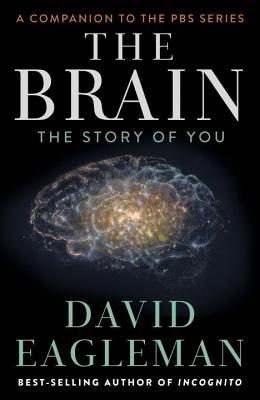
The book if full of all kinds of absolutely fascinating facts about inner workings of our brain. Sometimes even slightly creepy. For instance, read this quote below:
Quote: “So not only was it possible to implant false new memories in the brain, but people embraced and embellished them, unknowingly weaving fantasy into the fabric of their identity.”
Disregard if you believe someone can implant fake memories, this book is totally absorbing and exciting read if you are new to neuroscience and psychology and want good introduction. You would get to learn about extreme adaptive capabilities of the brain and other things. As I understand it, effectively the brain is a powerful interpretation machine taking electrical signals as input (from your ears, eyes, tongue, nostrils, skin) and translating them into flow of bioelectric processing that could cause certain chain reactions resulting in physical actions and/or secretion of chemical substances (hormones) by glands effectively making us alive. Since the brain is such a powerful interpreting machine we can work on providing it with other inputs and teaching it to handle those as well. In this way a guy has learned to see with his tongue and even climb using Brainport. This is a real product for people with disabilities consisting of a camera on outside, a pad put on tongue towards which an electric picture is projected. To extend on this, there is nothing that could prevent us from extending capacity of human body.
Or, maybe, instead we can build artificial general- or super- intelligence to help us out?
Life 3.0: Being Human in the Age of Artificial Intelligence

Let’s do versions first: 1.0 – biological when hardware and software evolved, 2.0 – cultural when software is designed and hardware is how it was, 3.0 – technological when both hardware and software are designed. Here “hardware” is human body and “software” is our cognitive abilities to process information.
This book reads almost as science fiction and somehow involuntarily reminds me of movies where robots and humans exist together. The book brings questions of how the society will exist when Artificial General Intelligence becomes a reality. Would we no longer need to work? Would machines try to exterminate us as in Terminator movies or harvest for energy as in The Matrix? I liked be book for bringing all of these interesting questions, entertaining on all kinds of possibilities, and exploring potential solutions to new problems we would eventually have to face and at same time not actually being a fiction.
Can we become super-humans or even gods without the help of AI? Let’s look what the next book says:
Homo Deus: A Brief History of Tomorrow

The key idea is that we eventually become god-like and gain ability to control life and environment and Homo Sapiens goes extinct. We might eventually lose our carbon-based existence and just become information.
I really like the structure of this book taking your slowly from understanding how much progress humanity has made by overcoming such horrible things as plagues, famines, and wars. Then the book sets next goals for humanity such as immortality and eternal happiness. The author then projects his historical knowledge and recent achievements in medicine and technology into what future might bring us.
We believed in gods, science, liberalism, other things. Humanism being the main “religion” of 21th century when we celebrate our own intelligence and experiences, but the final and the last one could be Dataism. You can translate everything into data! Everything. Many people measure their pulse, sleep, etc. People with diabetes wear devices that measure blood sugar levels and inject insulin as needed. People post pics on facebook, instagram nonstop, and tweet like crazy. When I run I measure speed, pace, etc and compare to earlier myself and other runners. Oh… and I write this post. Let’s go further: wondering how good sex with your partner is – easy put data sensors that measure, duration, intensity of orgasm, analyses sweat contents and put it on a plot over period of time and you know all you desire to know and, maybe, even compare to results of others. Sounds weird? I bet, but some real companies produce products like this. Now, let’s put even crazier proposition: Do you even exist if you are not connected to net and there is no digital trace of you? Right now, you would think that you do, but maybe in future ubiquitous data stream of human life becomes their life in itself?
Quote: “Senses and emotions are biochemical data-processing algorithms”
Speaking of biochemistry:
12 Rules for life

Serotonin is natural hormone associated with feeling of happiness. It is antidepressant you can get prescribed if you’ve got depression. In lobsters serotonin is regulating posture – the more serotonin – the more open lobsters posture is – the higher lobster is in its dominance hierarchy. Let’s call them alpha-lobsters (AL). Other male lobsters would know AL are tough ones and would not take on them and female ones would be attracted to AL. Female ALs would also be the ones with all the mating choices. Lobsters existed since 350M years ago (and if you recall 65M for dinos and some 200-300K for homo sapiens). Now the interesting part: the process of regulating posture and social status is embedded in humans the same way as it is in lobsters. Yeah it is very deep inside us, but, damn, crap, no! So the first rule is “Stand straight with your shoulders back”.
I didn’t like the book, though. Except of the very first rule others are not so fascinating and exciting. Not too sure what exactly to make of the first rule or what other rules are teaching us, but the book is quite popular and the author is very interesting personality (Canadian clinical psychologist with strong views), so instead of reading I would recommend to watch this first: https://www.youtube.com/watch?v=-5RCmu-HuTg (start at 3:40) and if you still want to read all 50 shades of grey in the lobster world – go ahead.
10% Happier
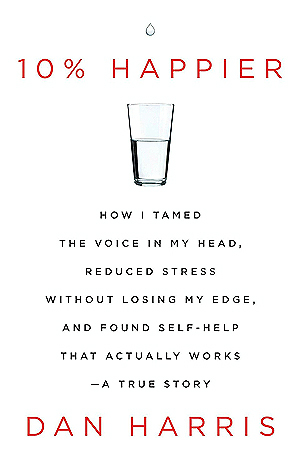
Another book I cannot really recommend. Listing here mostly for myself as not to forget. I read it and, yes, it is quite interesting as a story, but not much more. The book is like a memoir of one of the journalists who discovered his way to practicing mindfulness through his personal struggles of finding himself while building his career, reporting at war, craving for drugs (adrenalin, cocaine, whatever), and interviewing notable people, such as Dalai Lama. The only learning form this book is that celebrated people are often deceiving, they are hiding things and are driven by crazy things. The author didn’t motivate me to start meditating – I still think it is not gonna work for me. Somewhat fun read though, waste of time otherwise.
Speaking of deception:
The 48 Laws of Power
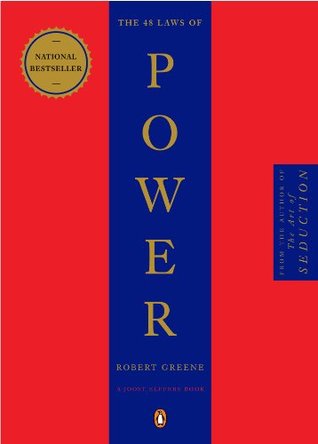
Let’s start with a disclaimer: I do NOT praise this book.
This book effectively teaches you how to deceive others and how to work your way to gain power the evil way. Wikipedia says it is a bestseller popular with prison inmates and celebrities. Description on goodread has this “This amoral, cunning, ruthless, and instructive book synthesizes the philosophies of Machiavelli, Sun Tzu, and Carl Von Clausewitz with the historical legacies of statesmen, warriors, seducers, and con men throughout the ages.”
If you want to understand how amoral this is read the quotes here: https://www.goodreads.com/author/quotes/865.Robert_Greene I don’t even want to repost them here.
Key learning: bad people exist and they could intentionally be manipulating you in psychopathic ways just to get what they want no matter what the price or method. It is good to be aware of such things and try to recognize and distinguish between people with genuinely good intentions and those who are evil. Never be a victim.
The subtle art of not Giving a F*ck

One thing that I like about this one is that the author says it is ok to not try being positive all the time. At times people are overplaying it and it is weird when they pretend to be happy. Acceptance of some of the negative experiences is a positive experience in itself.
The book is an easy and extremely entertaining read, especially if you are feeling a bit stressed and worry about too many things. Definite fun. Most of us like fun, so if you are going to read/listen to it do it mostly for that reason.
Algorithms to live by
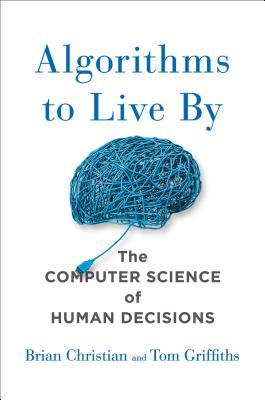
Fun book for software engineers on how you can incorporate computer algorithms into your everyday life. Just go and read. Super easy reading and wonderful way of spending your time.
Wondering how to sort your clothes and stuff in the most effective way? Like maybe sorting them by type? Nope. Wrong answer. The best way is to introduce Least Recently Used cache, making sure stuff you need the most often is always most accessible.
Go ahead and apply game theory towards making your decisions and design mechanisms for decisions instead of relying on good intentions.
Never split the difference
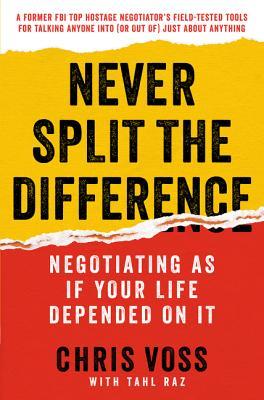
Ok, finally back to slightly more serious books, and I would go as far as to say that this book is a “must read” before your next job offer negation. The book is written by former FBI agent who worked as hostage negotiator.
It is also probably one of the most practically useful books for people who have office carriers like me and would like to apply negotiation techniques in almost any discussion. More often than not, “No” means “wait” or it means there is something the other side doesn’t want to reveal. Your job is to work through what the other side really wants.
Louder than words
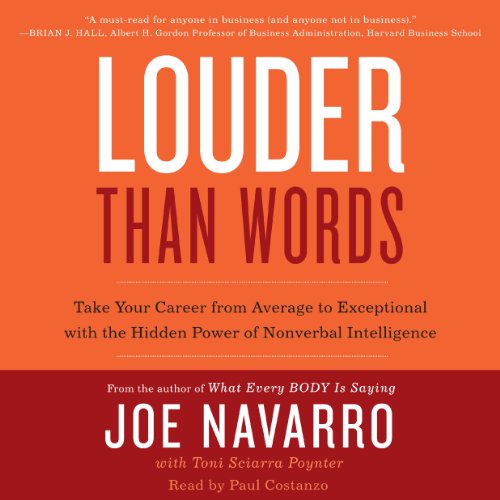
This is a book on nonverbal intelligence. I remember it being intriguing when listening to. We humans are very interested in knowing what others think. They say body language conveys 55% of communication. If this is true then we should benefit from learning to be better at understanding nonverbal messages.
Principles: Life and Work
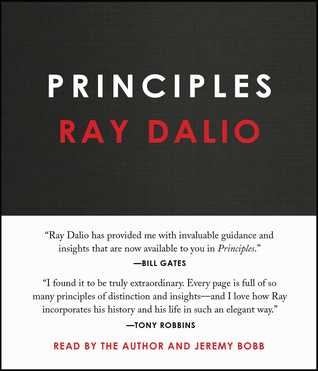
This is really good perspective on how you can structure your life and work around set of principles. I like the emphasis on always getting all the way to truth by overcoming your emotions, ego, and blind spots.
One of the great and unique notions introduced in the book is idea meritocracy that can be applied at workplace based on the following: radical truth – no filter on what you’re thinking, radical transparency – being super open for entire organization, thoughtful disagreement, believability-weighted decision making.
If you don’t have time for the book just want this great video on how economics works and then look at the principles for success videos. These two should be worth one hour of your leisure time. I really appreciate how Ray Dalio is trying to leave some legacy after him.
Extreme Ownership
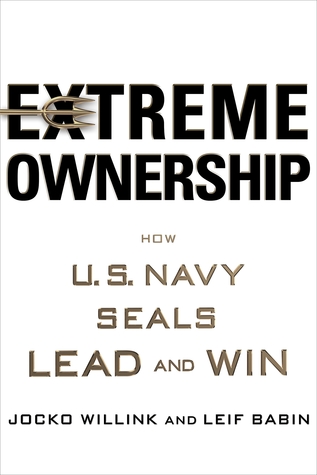
This book is written by former US Navy-Seals who fought in Iraq and in essence is partially memoir and partially book on leadership covering 12 principles towards becoming extreme owner and a real leader. The most memorable are the first and the last. The first one is extreme ownership: always take full responsibility for your own and your team’s results, never blame anyone.
Quote: “Implementing Extreme Ownership requires checking your ego and operating with a high degree of humility. Admitting mistakes, taking ownership, and developing a plan to overcome challenges are integral to any successful team.”
The last principle one is discipline equals freedom: conquer your weaknesses, procrastination since being disciplined means being fee. This brings us to another book:
The Power of Habit
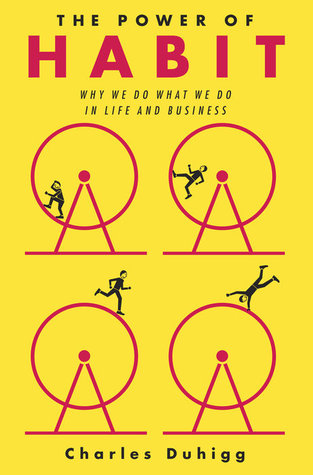
Key learning: most of our lives are structured on top of numerous habits and building right habits could propel you really far forward.
Habits have the following structure: Cue (stimuli) + Response (actions) => Reward (resulting sensations). To build a new habit you need to identify the response – which is the core of what you want to be doing, then you need to come up with cues that would repeat and eventually create craving (same timing, same location, same triggers), and then you need to make sure you get the reward or punishment. Once this is done: repeat-repeat-repeat and at one point you won’t be able to resist.
Quote: “Habits are most malleable when the Golden Rule of habit change is applied: If we keep the same cue and the same reward, a new routine can be inserted.”
Thinking Fast and Slow
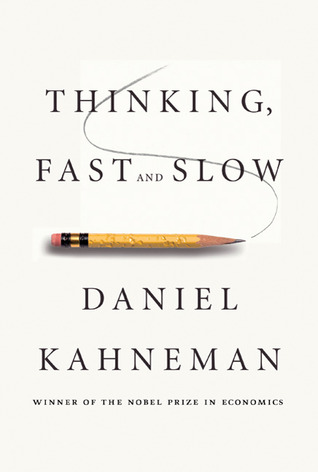
This one is written by Nobel price winner and is probably based on more research done by author himself than any other book in this list. Not an easy read. I definitely recommend the book, but probably don’t listen to it like I did. Get yourself kindle or paper version.
This is a book on how we think about things in realm of two systems: system 1 – fast processing, lazy, and emotional, automatic, and impulsive; system 2 – slow processing, rational, aware, conscious, and considerate. Although the author didn’t give these parallels I tend to think about system 1 as subconsciousness or based on subconsciousness and about system 2 as that of consciousness.
Default rule. Let me give you one example: I lived in Austria for some 6 years. Had I died in car incident I would have been donor of my organs, same is the case for 99% of drivers in Austria. Now, this number is only 12% in neighboring and culturally similar Germany. This is simply because Austria uses opt-out and Germany uses opt-in system when collecting consent. System 2 needs to put consideration in case of opt-in, while system 1 is happy to skip in case of opt-out.
Loss aversion. We are more afraid to loose something than we are eager on getting more of it. Authors provide numerous examples of loose/gain propositions with exactly same statistical outcomes and demonstrate how people choose option that sounds more safe. Unfortunately in real situations what sounds safer could be irrational and more often than not people actually make the wrong decisions. This is especially important when you make money decisions.
There are many other concepts introduced in the book all backed up by research, evaluation and phrases for remembering in the end of each chapter. Just going over all of these concepts is worth your time as it might help you make better decisions. I am considering rereading kindle version of the book after some time.
Conclusion
Personally I find this kind of books very fascinating and engaging as they provoke profound thoughts on our existence and provide guides towards enhancing our future well being.
Hopefully these short reviews are useful to you and will help you pick your next read.
Thank you.
Would be happy to receive quick recommendations on similar books in comments!
“StrengthsFinder 2.0” book and assessment
April 23, 2018 Book Reviews No comments
![StrengthsFinder 2.0 by [Rath, Tom]](https://images-na.ssl-images-amazon.com/images/I/51x%2B5b0xOiL.jpg)
The book
The book starts with arguments on why it is important to focus on your strengths versus your weaknesses. The author points out that for way too long industries are trying to “fix” people, and it has some benefits, but empowering people in areas they are best at produces significantly greater results. “We found that if your manager focuses on your strengths, your chances of being actively disengaged go down to one in one hundred. However, if your manager primarily focuses on your weaknesses, your chances of being actively disengaged are 22%, and if your manager ignores you, that percentage rises to 40%.”
“StrengthsFinder 2.0” then continues with introducing 34 different talents/strengths. The book provides brief description, a few examples of how person with this quality could sound like, and then proceeds with recommendations for individual and leader who manages person with this strength.
It makes sense to take an assessment before reading through these to know which ones to pay more attention to (though you are likely to just feel when it is about you).
The assessment
Do you know those online personality assessments where they ask you 10-20 questions and then give you a result, which says “You are 75.99% leader” or something. I am very skeptical of most of such assessment, even though, people, including me, like to take those. When I opened questionnaire that comes with the book “StrengthsFinder 2.0” I was positively surprised. It is a set of 177 questions and each of them is where you need to choose between two unrelated aspects of your personality within 20 seconds. So, from the first look, it was clear that it is superior to most of other. The book is based on 40 years of research and the assessment is taken by millions of people, so there is foundation for the assessment to be good.
Result of this assessment is 5 strengths that characterize you. You get results in a form of a document that with a description, example of how person possessing each strength would sound like, and 10 ideas for action for each strength. I was shocked by how strongly those 5 resonated with my personality, so I decided to embed few of such ideas into my own growth plan.
The assessment is available only if you buy a book (I listened to it on audiable.com) or if you purchase the access code. Link to assessment: https://www.gallupstrengthscenter.com/
My results
I keep these mostly for my own record, but what surprised me about the results was how unexpected some of those were. For instance, I never think of myself as competitive person. Though when reading through qualities of a competitive person and analyzing my own behaviour, I started to agree. This explains why I was so happy to win programming competitions, or hackathon in the past, but also why I avoid taking part in competitions where my chances are slim. Competitors don’t play to participate, they play to win.
- Competition. People who are especially talented in the Competition theme measure their progress against the performance of others. They strive to win first place and revel in contests.
- Focus. People who are especially talented in the Focus theme can take a direction, follow through, and make the corrections necessary to stay on track. They prioritize, then act.
- Achiever. People who are especially talented in the Achiever theme have a great deal of stamina and work hard. They take great satisfaction from being busy and productive.
- Analytical. People who are especially talented in the Analytical theme search for reasons and causes. They have the ability to think about all the factors that might affect a situation.
- Significance. People who are especially talented in the Significance theme want to be very important in the eyes of others. They are independent and want to be recognized.
Thoughts on the book “Mindset: The New Psychology of Success”
November 29, 2017 Book Reviews 2 comments
Just recently, using a recommendation, I read the book “Mindset: The New Psychology of Success”. In the book, Carol S. Dweck argues that people can be divided into two groups. Those who have fixed mindset and those who have growth mindset. This is how she explains it:
Believing that your qualities are carved in stone — the fixed mindset — creates an urgency to prove yourself over and over. If you have only a certain amount of intelligence, a certain personality, and a certain moral character, well then you’d better prove that you have a healthy dose of them. It simply wouldn’t do to look or feel deficient in these most basic characteristics.
A growth mindset comes from the belief that your basic qualities are things you can cultivate through effort. Yes, people differ greatly – in aptitude, talents, interests, or temperaments – but everyone can change and grow through application and experience.
Qualities of successful people and the growth mindset
Apparently the whole book argues that people with the growth mindset usually have better odds of becoming successful. Professor Dweck demonstrates this through the research she has done. Her team showed that the view people adopt of themselves has profound impact on their lives. This resonates with a famous quote by Henry Ford “Whether you think you can, or you think you can’t – you’re right”.
When I think of myself I cannot tell if I’m more of a growth mindset or of a fixed mindset. I am afraid to fail, but at the same time I am fine with trying things I could fail in. I like to prove myself, but at the same time I am open to learning and can easily admit if I don’t know something. Top grades in high school was my thing, but this didn’t stop me from taking part in math, physics, chemistry, programming competitions even I knew that at some level I will be stopped revealing that I am not that “all knowing”.
From my own observation, many successful people whom I met in life usually had an urge to prove themselves, which is explained in the book as a quality of a fixed mindset person. These people were so much afraid to fail that they put tons of effort into things they were doing. This might be one bit where I somewhat disagree with the author. Even more, it was somewhat ironical to read about desire to prove yourself as a fixed quality from a successful person who admits of being taught of fixed mindset in her childhood.
Of course, it is totally different issue when people try to prove themselves by pretending to be smarter, cooler, or whatever. I consider this to be a very bad behavior and in general a red flag for any relationship, including employer-employee.
Learning like children
In my opinion, the chapter on parenting is where the book really excels. The advice I took for myself is not to praise my children for how smart they are, but instead praise them for their effort. I strongly agree that it is important to develop children’s desire to learn things, to encourage their curiosity, and to work on their resilience to failure. It has been for couple of weeks as I try to use this advise with my daughter and it really works. My toddler daughter now seeks to put more effort into little things she does.
We all should be more like little children when it comes to learning and trying new things. A baby doesn’t question its ability to learn how to walk. Small failure is nothing more than a learning experience. While I was writing this blog post I also stumbled upon another idea that when we are young we are full of curiosity and intrinsic motivation but overtime it is replaced by extrinsic motivation in form of grades, ratings, incentive pay, etc. I think this idea by Edwards Deming plays very well with the ideas in the “Mindset” book, especially considering that Carol S. Dweck has done a lot of her research on students and children.
I want to leave you with this great illustration of the two mindsets.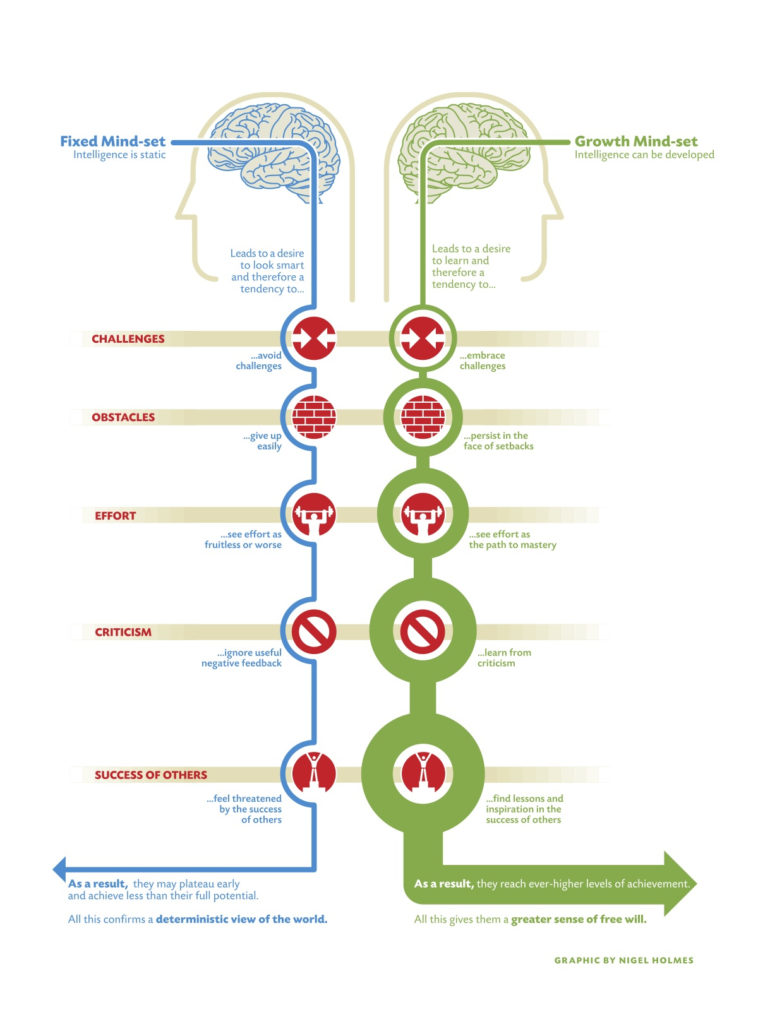
WeAreDevelopers 2017 Conference in Vienna
June 8, 2017 Conferences, Uncategorized No comments
Few weeks ago I went to attend a WeAreDevelopers conference in Vienna. The venue is just 10 minutes walk time from the place where I live.
The official web page for the conference is here and all of the talks can be watched at youtube here.
I will go through all of the talks I watched with a very brief message before giving my thoughts on the organization of the conference.
Day 1
Opening. For such a small country as Austria a conference hosting 3500+ developers is a big deal. Chancellor of Austria (most powerful position) took the keyword and, to my disappointment, for the most part spoke in German. I think this would be fine if only this conference wasn’t advertised as an international conference. In any case it is admirable that importance of IT industry is acknowledged by the Austrian government.
Build a World We All Want to Live. This talk was a lot about the future and exponential growth. I’m afraid there not much of takeaway except of a sense of a motivational inspiration.
Challenges of Autonomous Driving. I first heard about Rimac concept car on TopGear TV Show. It was very interesting to hear about the Croatia’s concept car from engineering perspective. What I learned is that there are a lot more of a challenge that has to be addressed than it is advertised by the car makers such as Tesla, Honda, etc.
IoT & Advanced Analytics – Real World Challenges for Developers. Austrian railway company explaining how they use all kinds of detectors on their trains and how their data is analysed. This does not get anywhere close to using IA, though still interesting.
One ID to Rule Them All. This was supposed to be a presentation on identification methods (think passports, ID cards) but somehow the presenter talked about solar panels, exponential growth of technology, and near free energy. Not sure how these two play together, but the title was definitely misleading.
How Different Open Hardware is to Open Software. Interesting talk, but again misleading title. Speaker presented his robotic arm project and how it can be used by people without an arm. Takeaway: these days you can download some code, buy Arduino and 3D-print yourself an arm within hours.
The Early Days of Id Software: Programming Principles. I found zillion of youtube videos with the same title where Romero gives the same talk on different conferences. Best to watch would be this another video here. He goes through the history of Id-software in the talk. Takeaway: John Romero’s Principles for Programmers
Getting Computers to Understand Us. This was a presentation on NLP and AI that started with punchcards.
How to Design Human Centered Chatbots? Takeaway: I didn’t learn how to design chatbots but I understood that chatboat euphoria is on a downtrend.
The Future of Online Money: Creating Secure Payments Globally. This was about PayPal money transactions and security. Takeway: eliminating middleman helps in improving processes.
Less Process, More Guidance. Takeway: The Atlassian Team Playbook.
Day 2
Extreme Continuous Integration. Automic company presented how they do hundreds of builds of different components for multiple platforms continuously.
Continuous Delivery Journey @ Wirecard. This was more of continuation of CI and CD topic.
Monorepos in the wild. A story of going to one repository. Some pros and cons where presented with a message that monorepo != monoapp.
Rebuilding an Aircraft on the Fly. Yet another story, now about fixing CSS by Trivago company. In my opinion this was just a common sense story.
Javascript @ Netflix. Standards of JS and their life-cycle were explained.
JS @ Uber. About programming languages & architecture approaches at Uber. Things like NodeJs, Go, Python, and micro-services were mentioned in addition to JS.
The Artist and the Machine. A lightning talk about nice spiral graphs. Takeaway: I bought my daughter a spirograph toy.
Working Backwards from the Customer. Amazon explained how they start developing with a press release. If they don’t like what is written it might not make sense to start doing it. If they like what is written and it sounds cool they add more details, create more technical translation and finally this is converted into development. I believe this was my biggest takeaway from the conference in general. In software projects it happens very often that customer does not get what they want. Starting with customer and being obsessed with the customer is probably something that makes Amazon stand out.
Model-Minded Development. A presenter from Google talked about importance of having a good model between computer and the real world.
Customizing Railways to Individuality. National Austrian railroad company talked about their challenges. They are in business for 178 years and can be considered dinosaurs when it comes to software.
Scaling Open Source Communities. Tips and tricks of handling an open source project were given. A lot of insight into OS software lifecycle.
Angular, Google’s Popular Application Framework. A relatively simple demo of Angular framework was given. Takeaway: Angular will last longer than any other JS framework. Let’s see.
PHP in 2017. This was somewhat hilarious talk by the inventor of PHP. He talked about lots of performance improvements that come with PHP7 and how that can “save the planet”. Takeaway: This blog is self-hosted word-press. I upgraded the PHP version to 7 making my contribution to more sustainable future.
Developers Are Writing the Script for the Future. Definitely the highlight of the conference was a presentation by the creator of StackOverflow Joel Spolsky. This was inspirational talk and a great way to close the conference.
Organization and conclusion
Many people have complained about significant overbooking for the conference. It was very unpleasant to see organizers bragging about 3,8K attendees when there was obviously not enough room for all of them. There are some angry tweets and blog posts online, like this one WeAreDevelopers – A Mess of a Conference. I agree. It was very disappointing to find myself in crowd of people and not being able to switch tracks. Basically, if you decided to switch track you would end up somewhere standing on the side not being able to listed or to see. Second day proved to be much-much better, but who knows, maybe, this is because of some people simply decided that this conference is not worth their time?
In my opinion it was the second day that saved the conference. Better talks were delivered at the second day and more comfortable access to stages, food, and company stands was possible.
In any case, I’m really happy that such a big conference was organized in the city where I live now and that many well-known speakers from well-known companies came to talk. There was a lot to learn. I’m looking forward to #WAD2018.
2017: Where Do You Want to Be In a Year?
February 3, 2017 YearPlanReport 2 comments
Again, not to break the tradition, here is my resolution for the year 2017.
- Start getting up at 6
- Run 40+ times; hike 3+ times
- Lead a project at work to success
- Teach dauther basics of skiing and reading
- Travel Balkan countries
- Quit coffee and social media
- Read 24 books
- Write 24 blog posts
- Win a T-Shirt
- Make github green
- Learn something
- Buy something
- Enjoy the life
This list is rather cryptic and unconventional. As they say, it is not that “SMART” and I agree. Fortunately for me, I’m the boss of my life and this is how I would like to put it for this year.
The road on a picture below appears to be smooth and straight. There are some shadows and lots of light in the end. Also, I don’t know if the road is still there where the light is, do you?
What have I done in 2016
February 2, 2017 YearPlanReport 2 comments
It is quite late into the year 2017, but I decided not to break the tradition and write my yearly report.
When I planned my 2013 I had “the best thing that could happen” listed as I knew my daughter was coming. When I was planning for 2016 I didn’t expect to have a second child.
But here I am with my son just some minutes after he was born on 16th of December 2016.
I’m really glad and looking forward to see him grow and build his own life.
Except of this main and life changing event, few other things happened: we have moved to slightly bigger apartment, and I made some progress in my career (more on that sometime later).
Here is the list of planned things and their completion rates:
- Run 2-3 times a week for at least 5 warm months.
100% I ran 50+ times totaling 320km. Here is a nice post from me that some people find inspiring. - Make start of the day more healthy and productive. Ideal scenario would be: get up at 05:55AM, drink glass of water, do exercises for 15-30 min, shower, some important task and/or planning for the day, breakfast, work… But I will consider this item achieved if I start doing exercises regularly even if it is only 2 times a week just for 10 minutes.
15% This is too difficult for me, though I managed to be at work around 7:30 for two months or so and do exercises sporadically. - Travel to the UK, Norway, sea side country, and do a car trip somewhere nice.
100% Visited UK, Ireland, Georgia, Croatia and few other Austria bordering countries for shorter trips. We had to cancel Norway because of the the wife’s pregnancy, but it was equally compensated by a trip to Ireland and adventures mountains in Georgia. - Spend one hour every day with my daughter playing and learning things.
50% I’m bit shocked that I had this in a plan. Spending quality time with children is important and should be done without saying, but we neglect it too often. - Count not more than 12 weekends in a year when we didn’t go out to do some activities.
50% I kept track of these “bad” weekends and there are definitely more than 12, though, in part, it was caused by unforeseen circumstances. - Learn 12 simple skills from other people. To achieve this goal I will first identify 12 people from the community and those surrounding me and chose some characteristic I admire.
15% Didn’t work out. Maybe very few things from guys at work. - Read at least 6 technical books.
65% 3 books read. 2 half read. - Watch at least 12 pluralsight courses.
100% Watched more than that but probably benefited from few. - Write a simple stock analyzing web site. It could have any set of features, point is to get something interesting running.
0% I don’t count retarded attempt on it. - Write any simple useful open source tool. I have WCF related idea in mind.
0% Unless this git bash script counts. - Learn at least two web technologies. I have NodeJS and AngularJS in mind at the moment.
25% No activities on NodeJs, though some on Angular. More are coming in this year. - Share knowledge more actively. Minimum would be to write 24 blog posts, answer 12 questions on SO, help few people online.
50% 16 posts. 7 SO answers. Few comments on blogs. - Acquire B1 German certificate, attend German course, finish entire German Duolingo tree.
100% All of these completed. This also allowed me to acquire permanent residence permit in Austria. - Learn English language prosody and fix pronunciation of vowels. Optionally attend a specialized language course.
10% Few failed attempts. - Save 24X my monthly spendings, go through 13 investment books I read in 2015 and extract notes, do reviews and write about them.
30% Saved some money, not as much because of the move. Total fail on book reviews.
This gives me 47% overall. Apparently, I fall into the 92% category of people who fail on their year resolutions.
Nevertheless, I find this exercise of planning for a year to be useful. At least it gives a sense of things that you want to do if otherwise you are too chaotic.
I hope you all have had a good year and will have even better one this year. Happy New Year! (Yes, yes… I know – it’s February outside, but someone had to be the last to wish you “Happy New Year!”)
